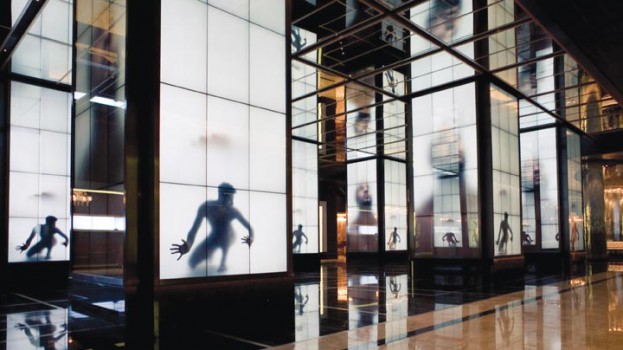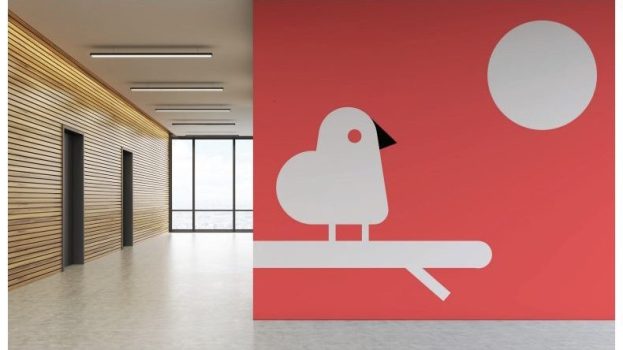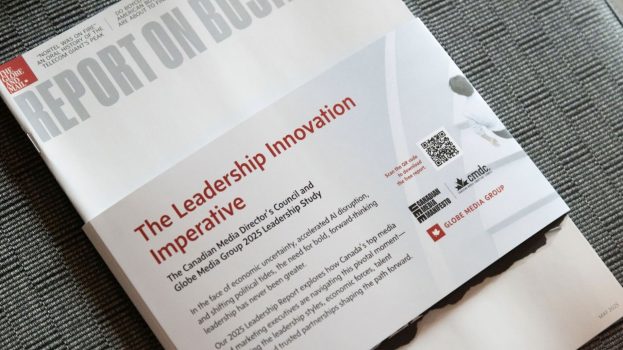Inside the Cosmopolitan Hotel on the Las Vegas strip, guests pass giant columns filled with rows of books as they make their way to check-in. Later in the evening, the same columns appear to have naked people inside them, moving seductively.
These are just two of the scenarios possible inside the hotel. It opened to the public in December, and is outfitted with screens built into the giant columns and on walls, able to change their content with the flip of a switch.
The providers of that content, U.S. agency Digital Kitchen, won the Design Grand Prix at Cannes this year for helping to create an experience that goes beyond what one would normally think of when hearing the terms “Las Vegas” and “digital screens,” turning the hotel walls into a curated, ever-changing art gallery. So far, they’ve created six concepts for the hotel, chosen from more than 40 ideas, with new ones in the works.
“It’s definitely thinking about the space itself as [having] volume, and thinking about the column as a three-dimensional object, rather than just screens,” says Anthony Vitagliano, ECD at Digital Kitchen.
The decision to incorporate digital screens was made from the outset, prior to the current management team coming on board, so as the Cosmopolitan brand positioning was built, the challenge was to make those assets work through the lens of the new brand they were building, says Chris Burns, director of content and entertainment curation at the Cosmopolitan Hotel. The brand image they wanted to create had to appeal to an audience that was “well cultured, well travelled and are looking for experiences they can’t get anyplace else but aren’t just a spectacle for spectacle’s sake.”
The fact that the digital component was considered from the beginning was key to its success, and is signaling a new era of immersive design that brings various disciplines around the table from the start. It was this way of thinking that impressed the judges at Cannes, such as Canadian judge Hélène Godin, CD at Sid Lee in Montreal.
“It’s totally embedded into the whole project,” she says. “It’s not ‘let’s put some digital at the end,’ so it’s a new way of thinking about mixing disciplines, and we are thinking the same way at Sid Lee.”
Godin gives the example of Sid Lee’s recent store design triumphs, such as the digital-heavy Vidéotron store in Quebec, which features touch-screens and an LED-animated multimedia staircase, noting that “we worked together – architecture, branding and marketing – the concept was developed around these three things.” She adds that it’s not only about the digital experience, but also about the holistic experience.
“I think the next big thing is creating experiences that are engaging, adaptable and really immersive to the customer,” she says.
The idea of collaborative thinking was echoed by Vitagliano: “The interior designers and the architects really need to start building this into their concepts and then consulting and partnering with us, and we’re seeing that happen a lot more.”
And both Vitagliano and Godin say they expect to see more design with adaptability in the future, as our tech-heavy world becomes even more so.
“As the technology gets less expensive – because even just five years ago this would have been really hard to pull off – it’s becoming more available to people,” says Vitagliano, noting that it could allow brands to change the messaging and experience for each guest, as the Cosmopolitan did during Chinese New Year, transforming the interior of the hotel to appeal to Vegas’s large Asian market.
“Exhibit space has been doing this for a long time,” says Vitagliano. “You’re now seeing it being injected into architecture and even interior designers are thinking about it more, so I think we’re at the cusp of this being a huge explosion.”
Jump to:
























